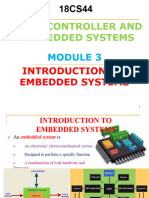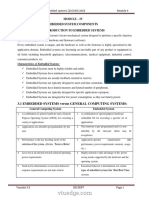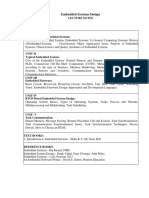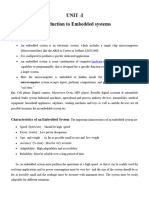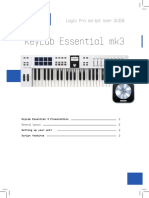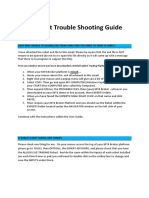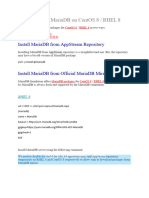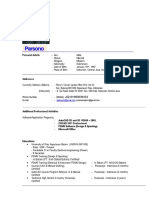100% found this document useful (1 vote)
46 views56 pagesWeek 1 - Introduction Embedded System
The document provides an introduction to embedded systems, focusing on their design, characteristics, and applications across various domains. It outlines the differences between embedded systems and general computing systems, discusses the historical evolution of embedded technology, and categorizes embedded systems based on complexity and performance. Additionally, it highlights the major application areas and the purposes that embedded systems serve, including data collection, communication, processing, monitoring, control, and user interfaces.
Uploaded by
ziphozonkengubane32Copyright
© © All Rights Reserved
We take content rights seriously. If you suspect this is your content, claim it here.
Available Formats
Download as PDF, TXT or read online on Scribd
100% found this document useful (1 vote)
46 views56 pagesWeek 1 - Introduction Embedded System
The document provides an introduction to embedded systems, focusing on their design, characteristics, and applications across various domains. It outlines the differences between embedded systems and general computing systems, discusses the historical evolution of embedded technology, and categorizes embedded systems based on complexity and performance. Additionally, it highlights the major application areas and the purposes that embedded systems serve, including data collection, communication, processing, monitoring, control, and user interfaces.
Uploaded by
ziphozonkengubane32Copyright
© © All Rights Reserved
We take content rights seriously. If you suspect this is your content, claim it here.
Available Formats
Download as PDF, TXT or read online on Scribd
/ 56







